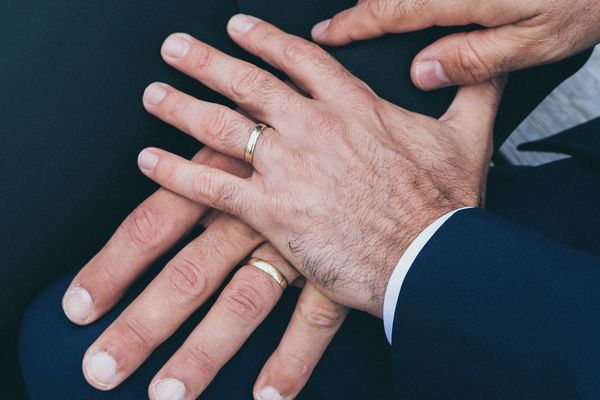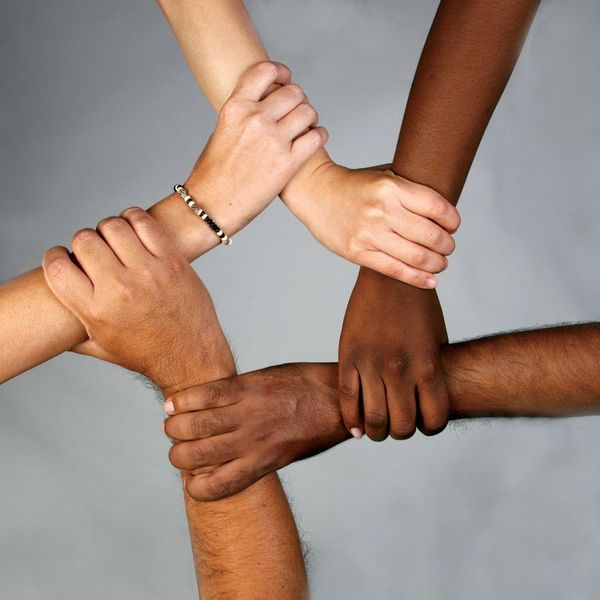The summer of 1969 was one of the most eventful times in American History with the first moonwalk, Woodstock, the Manson murders, and the beginning of the modern day gay rights movement. By many, the Stonewall riots are considered the most influential event leading up to the gay and lesbian liberation movement and “a symbol of resistance to social and political discrimination that would inspire solidarity among homosexual groups for decades.” They represent a key shift in the Gay Rights Movement. Some refer to this rebellion as the "Rosa Parks moment for gays" or compare it to the storming of the Bastille.
The Stonewall Riots were a series of spontaneous uprisings that started on June 28 in New York City and lasted for several nights after. They were caused by a police raid on a Greenwich Village gay bar called the Stonewall Inn. New York’s gay community grew tired of the police targeting the very few gay bars they had so on this day, after decades of oppression, they fought back.
During the raid, people leaving the bar while police were outside attempting to make arrests is when the violence broke out. When asked who it was that started the riots, Susan Stryker, a professor at the University of Arizona who has researched the history of the gay and transgender rights movements, said, “We know nothing conclusively. Besides, it’s wrongheaded to be overly concerned with pinning one clear-cut act on one identifiable person, in a misguided attempt to say that so-and-so rather than so-and-so “started” Stonewall, and that therefore history teaches us that X rather than Y is true. A heterogeneous street crowd started the resistance at Stonewall, not a particular person.” The crowd started throwing bricks, bottles, coins, and garbage at policemen. The riot intensified and the police were forced to retreat into the bar.
In the 1960s, very few places allowed openly gay people. If they did, it was usually a bar. At the time of the riots, it was owned and protected by the New York Mafia and was very popular because it served those that no other bars would. “The popularity of the bar led to the outcry of the community. If it had been a smaller bar, it might not have happened like that (Stonewall Fleet).”
Despite what the media portrays, something that makes Stonewall stand out against other movements is that this particular movement had all kinds of queers including lesbians, transgender men and women, drag queens, and even some allies. “For the first time in the history of the Gay Rights Movement, wasn't solely gays, or lesbians, or bisexual or transgender people. It was all of them, together, united under a single goal and desire. These riots are credited for the birth of the gay, lesbian, bisexual and transgender community. It was through this togetherness that the Movement truly became successful (Stonewall Fleet).” Like many events in history, those who were not white males seem to be erased. The Stonewall Riots became a symbol of a white male movement that people of color and women are taken out of. Some of those people are Marsha P. Johnson, a transgender woman of color, and Stormé DeLarverie, a biracial lesbian.
Marsha “Pay it no mind” Johnson was a black transgender woman who moved to the the Greenwich Village in 1967. She was a pivotal part of the Gay Liberation Movement as well as other civil rights movements She is actually suspected to have been the one to have started the riots. After Stonewall, she was a co-founder of the Street Transvestite Action Revolutionaries (STAR) and involved in the Gay Liberation Front (GLF) and AIDS Coalition to Unleash Power. After her mysterious death, her close friend and roommate, Randy Wicker, said, "Marsha rose above being a man or a woman, rose above being black or white, rose above being straight or gay".
Stormé DeLarverie from New Orleans was commonly referred to as “the Rosa Parks of the gay community”. She was a member of the Stonewall Veterans’ Association (SVA) and during a SVA sponsored program she boldly said, “It was a rebellion, it was an uprising, it was a civil rights disobedience – it wasn’t no damn riot.” She was in the bar the night of the riots, and witnessed a friend of a friend being taken and beaten by the police. After another police officer threw a slur towards her, she decided to stand up for her and her community. She punched the officer in his face and watched him fall to the ground in the same way that the officers were doing to everyone else in the bar.
At that time, the political and social climate were harsh on those identifying out side of the cis-hetero-normative society. They faced an anti-gay legal system meaning police harassment, persecution, and investigation of gays were permitted and routine. Homosexual acts were illegal both in public, as well as private. If caught, they were subjected to imprisonment, usually in mental institutions, and they were sometimes even objected to sterilization, castration, and lobotomies to try to be cured of their “mental illness”. In wasn’t until the Lawrence v. Texas Supreme Court case on June 26, 2003, where John Lawrence was caught in his own home by police having sex with another man, that the Supreme Court made same-sex sexual activity legal in every state.
Most LGBT groups wanted to prove that they could integrate into society so they used non-confrontational tactics but that ended in the late 1960’s with the spontaneous Stonewall Riots. They may have been sparked by the many active social movements including the African American Civil Rights Movement, antiwar demonstrations, and second-wave feminism, and the liberal environment of Greenwich Village.
Soon after Stonewall, Greenwich Village residents organized activist groups to establish safe places for gays and lesbians to be open about their sexual orientation. Then a few months later, two gay activist organizations were formed in New York and three newspapers were established to promote gay rights. “It started as a disorganized rebellion against oppression, but it triggered a chain reaction of community-building and political organizing that was emulated across the country and publicized throughout the world (The Gay Lesbian Review).” On the one-year anniversary of Stonewall, the first gay pride parades were held in New York, Los Angeles, San Francisco, and Chicago, making June gay pride month, a proud tradition that has lasted for over 40 years.
Stonewall was so important because it changed the popular opinion about gays and opened up the public to making people in the LGBT+ community more known which ultimately demystified homosexuality. When asked about Stonewall, Raymond Castro, a Stonewall participant, said, "never ever gave it a thought of [Stonewall] being a turning point. All I know is enough was enough. You had to fight for your rights. And I'm happy to say whatever happened that night, I was part of it. Because [at a moment like that] you don't think, you just act.” The Stonewall Inn was marked landmark status on just three days before the Supreme Court’s ruling in the Obergefell v. Hodges case and almost exactly 46 years after the riots occurred.
While the Stonewall Riots was a very important and influential event in LGBT+ history and that gay marriage is now legalized, it is important to remember that the fight for true equality is no where close to being over. Stonewall was a fantastic start to the movement, and hopefully by remembering this day in history it can help us bring focus to many more LGBT+ issues, such as homelessness, mental health, abuse, and much more.





















